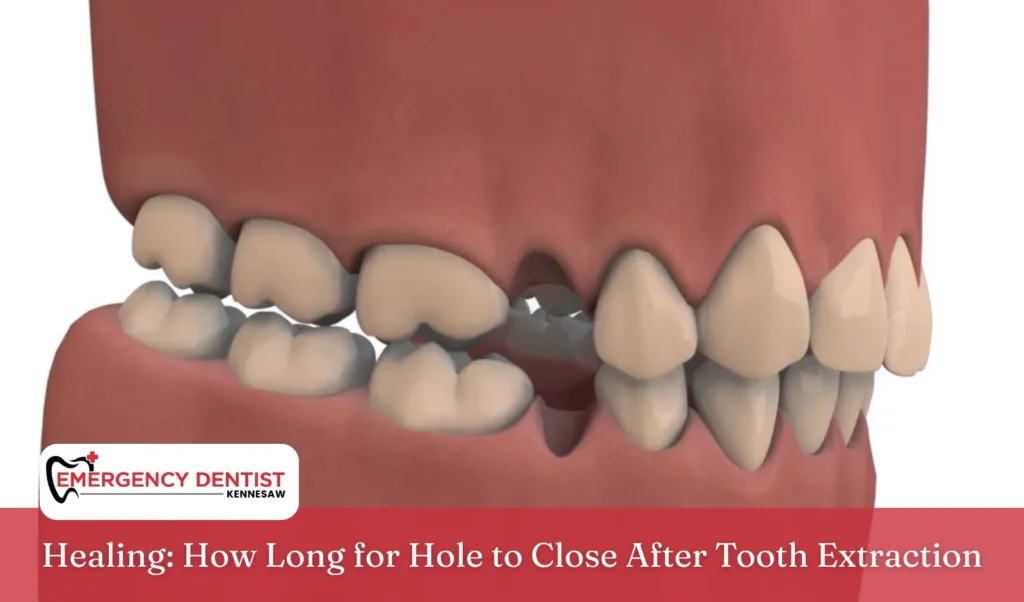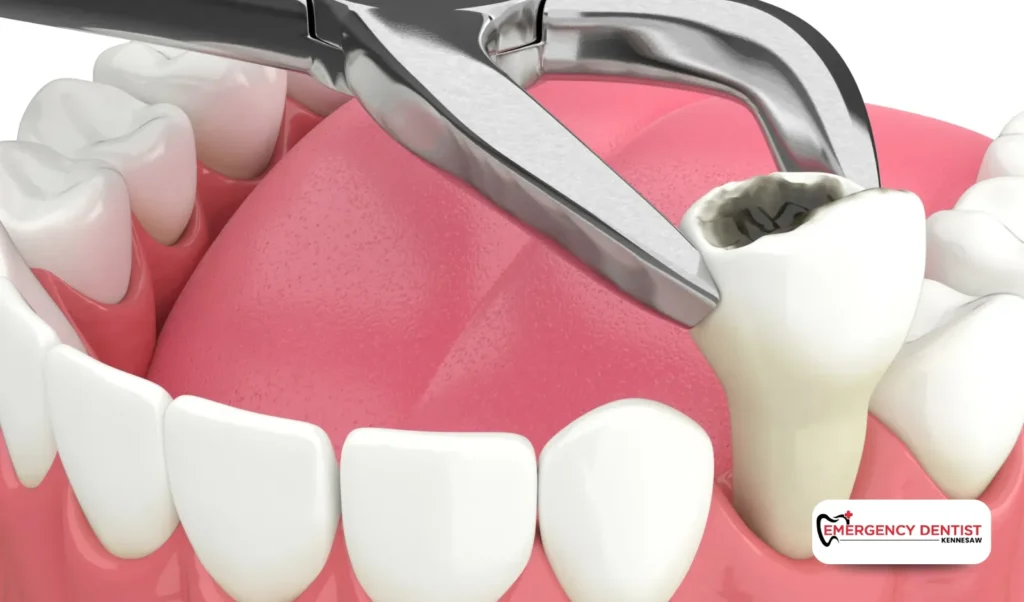Healing: How Long for Hole to Close After Tooth Extraction

Many patients ask, “How long is the hole closed after tooth extraction?” Whether you undergo a simple extraction or a more complex surgical extraction, knowing the expected healing time provides peace of mind. Everyone heals at a different pace, but understanding the stages of the healing process can reduce worry and help you plan effective aftercare.
The overall recovery time depends on the type of extraction, your health, and how carefully you protect the extraction site. If your healing seems delayed or you notice problems, an Emergency Dentist in Kennesaw can provide expert guidance to ensure recovery stays on track.
Why an Extraction Hole Forms
When a dentist performs a tooth removal, it leaves behind an empty tooth socket in the jawbone. This area, called the extraction site, is lined with soft tissue and surrounded by the gum line. While the hole may appear significant at first, your body immediately begins repairs. Over time, gum tissue regrows and bone beneath strengthens, allowing the hole to gradually close.
The Importance of the Blood Clot
Within about 30 minutes of extraction, a blood clot started to form in the socket. This clot acts as a natural bandage, shielding sensitive nerves and bone while serving as the base for the healing process. It allows soft tissue to grow and eventually cover the gum line.
If the clot becomes dislodged or dissolves too soon, a painful condition called dry socket may develop. This not only prolongs the recovery time but also raises the risk of infection. Protecting the clot is one of the most critical steps to ensure smooth healing.
Types of Extraction and Healing Time

Different types of extraction impact how long the hole takes to close:
- Simple extraction – The dentist loosens and removes the tooth without surgical steps. Recovery is faster, with the extraction site beginning to close within one to two weeks.
- Surgical extraction – Used for impacted or broken teeth, especially wisdom teeth. Because gum or bone may need to be cut, the healing time is longer and may take weeks before the soft tissue closes.
Wisdom teeth extractions often take longer to heal since they are located at the back of the mouth and involve more complex procedures.
Stages of the Healing Process
The healing process occurs in stages, and each step matters:
- First 24 hours – A blood clot starts to form, mild swelling begins, and bleeding slows.
- Days 2–7 – Soft tissue repair begins, and the gum line starts to close the hole.
- Weeks 2–4 – Gum tissue largely heals, though deeper bone and the tooth socket are still recovering.
- 1–3 months – Bone continues strengthening, and the site becomes smaller.
- Complete healing – Depending on the procedure, full closure may take months until the site is structurally fully closed.
How Long for Tooth Extraction Hole to Close
For most patients, the visible hole begins shrinking within the first week as the healing process takes hold. After a simple extraction, soft tissue closure usually happens within two to three weeks, although the deeper layers of the tooth socket and bone may take several months to fully recover.
In contrast, a surgical extraction, particularly when removing wisdom teeth, generally takes longer. It may require six weeks or more before the gum line completely seals the site. Even then, the bone beneath and surrounding soft tissue often continues healing for several months before complete healing is achieved. While every patient’s recovery time is unique, following proper aftercare instructions helps protect the blood clot, reduce complications, and speed up the overall healing process.
Protecting the Extraction Site During Recovery

Proper aftercare helps prevent complications and supports faster healing:
- Avoid food particles – Stick to soft foods like smoothies, yogurt, or mashed potatoes that won’t get trapped in the socket.
- Eat room temperature meals – Very hot or cold foods may disturb the clot and slow the healing process.
- Practice gentle oral hygiene – Rinse carefully with salt water and brush near the gum line without dislodging the clot.
- Rest well – Strenuous activity may increase swelling and extend the recovery time.
These steps protect the clot and encourage the extraction site to close more quickly.
Signs of Healthy Healing vs. Complications
Normal healing includes gradual improvements: less swelling, reduced pain, and a shrinking hole. However, certain symptoms may suggest complications:
- Severe or worsening pain days after extraction
- Persistent unpleasant taste or odor in the mouth
- An empty tooth socket where the clot is missing
- Swelling that fails to improve or worsens
These could signal dry socket or infection. If you notice these symptoms, contact an Emergency Dentist in Kennesaw promptly for care.
Conclusion
Healing after tooth extraction takes time and consistent care. A simple extraction may leave a hole that closes in a few weeks, while a surgical extraction, especially for wisdom teeth, often takes longer. Even when the gum looks healed, full complete healing of gum and bone may take several months before the site is fully closed.
Protecting the blood clot, avoiding food particles, eating room temperature foods, and keeping up with gentle oral hygiene are key steps to prevent dry socket. Each patient’s healing time is unique, but with proper aftercare and professional support, the extraction site will heal safely. If your recovery time feels delayed or unusual, an Emergency Dentist in Kennesaw can provide the care needed for a smooth recovery.


